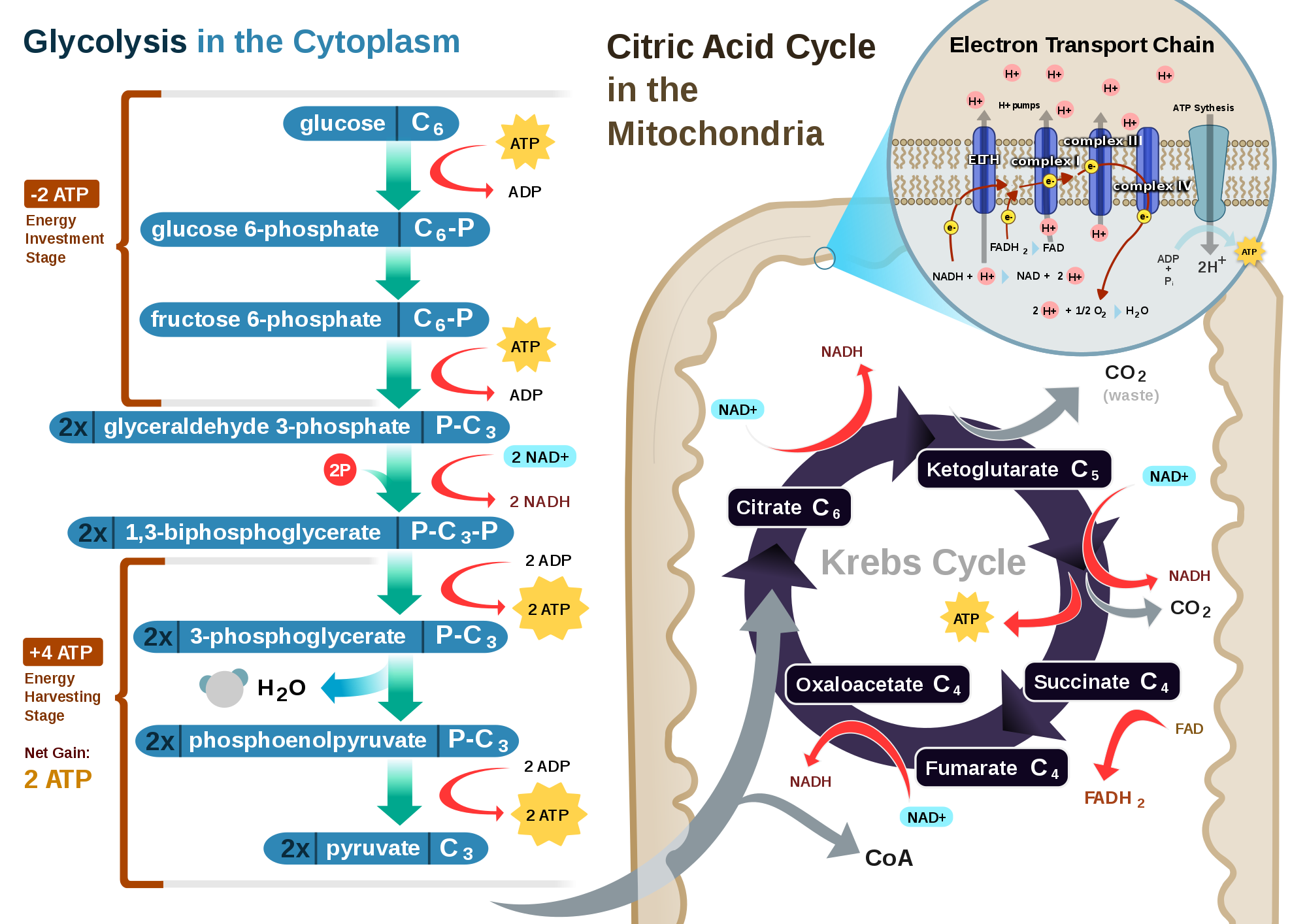The different types of cells are eukaryotes and prokaryotes. Prokaryotes are cells that don't have a nucleus or most organelles. Some examples of prokaryotes include bacteria. Eukaryotes are cells with most organelles, including a nucleus. It is theorized that mitochondria and chloroplasts are prokaryotic cells that continued to live after being eaten by a eukaryotic cell.
Membranes of cells are made of 2 layers of lipids. Different membranes include in nuclear membrane, which holds the DNA in the nucleus. The lysosome digests old organelles that don't work any more, or old cells that don't work. There are 2 types of Endoplasmic Reticulum (ER), rough ER, which has ribisomes on the surface, and it helps finish making proteins. Smooth ER has no ribisomes on the surface, and detoxifies drugs. Vesicles take things out of cells. the Golgi Apparatus packages finished proteins, lipids, and hormones. Chloroplasts go through the process of photosynthesis to make glucose, and mitochondria break down glucose to create ATP for energy. And the cell membrane holds everything in the cell, and selects what enters and leaves. Other organelles are the nucleolus, which is the center of the nucleus, which starts ribisome production. In the nucleus, DNA is stored. Vacuoles store things sch as water, salts, proteins, and carbs, but not all cells have vacuoles.
Cellular Respiration and Photosynthesis were the most complicated processes we learned about, so we learned a simpler and less detailed version of both processes. Even so, they are both still somewhat difficult to understand.
 |
| A Simple Diagram of Chloroplast |
Cellular respiration is the opposite of Photosynthesis. Instead of energy water, and CO2 being used to create glucose and oxygen, glucose and oxygen are used to create CO2, water, and ATP (energy). Cellular respiration goes through 3 steps. The first step is glycolysis, which takes place in the cytoplasm. It turns glucose into 2 ATP molecules, and creates Pyruvic acid, which goes to the next step, the Krebs cycle. The Krebs cycle converts the Pyruvic acid into 2 ATP, CO2, and electron carrying molecules called NADH and FADH2. Then, those electron carrying molecules and oxygen go to the electron transport chain, which uses all of those molecules to convert ADP into ATP, and creates 32 ATP, making a total of 36 for all of cellular respiration.
 |
| A much more detailed diagram of Cellular Respiration |
Overall, this unit contained lots of information regarding the different organelles of eukaryotes, and focused a lot on photosynthesis and cellular respiration, the most complex topics of the unit. My only remaining questions are how prokaryotes function, since they have no organelles or nucleus.